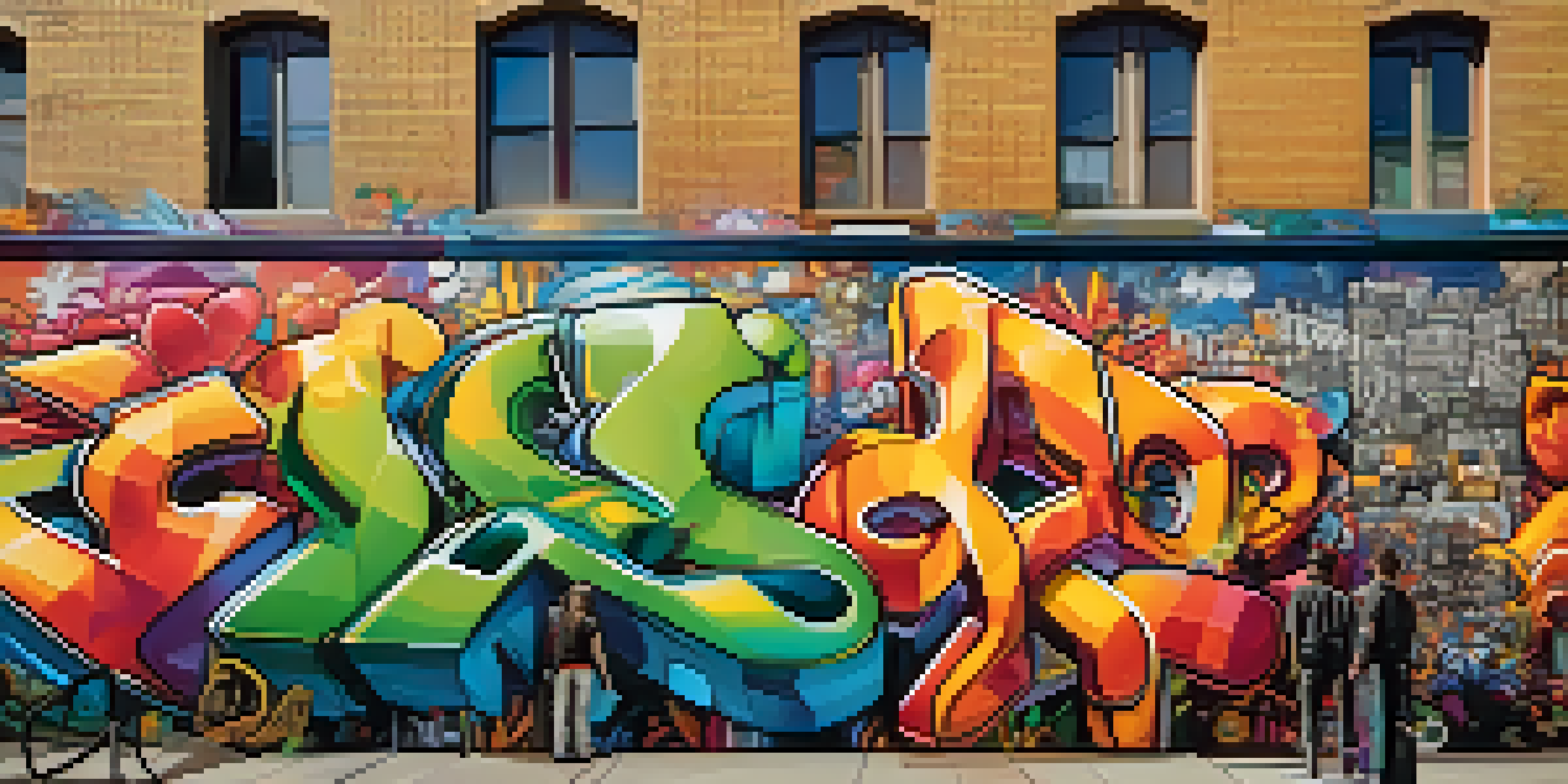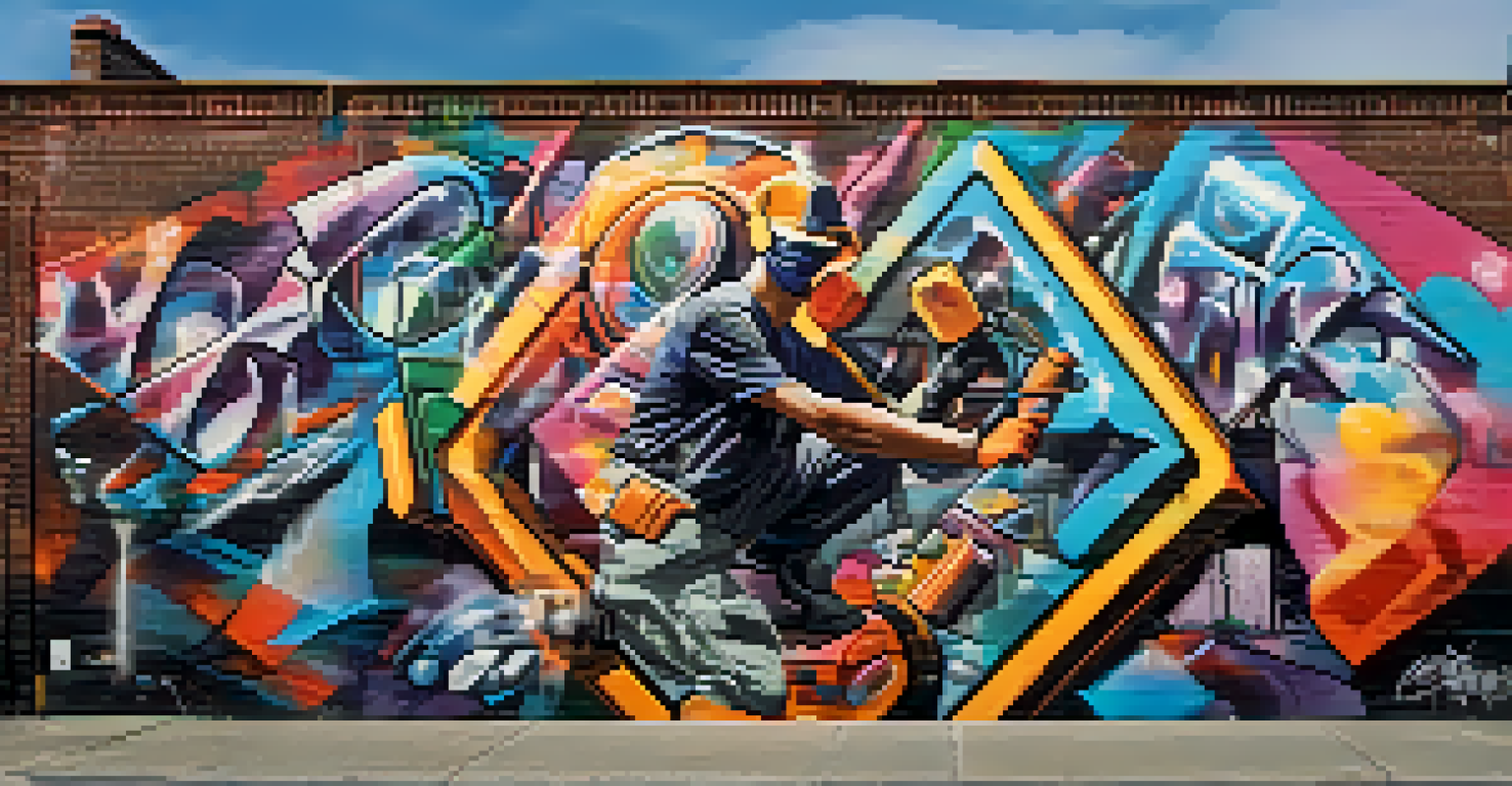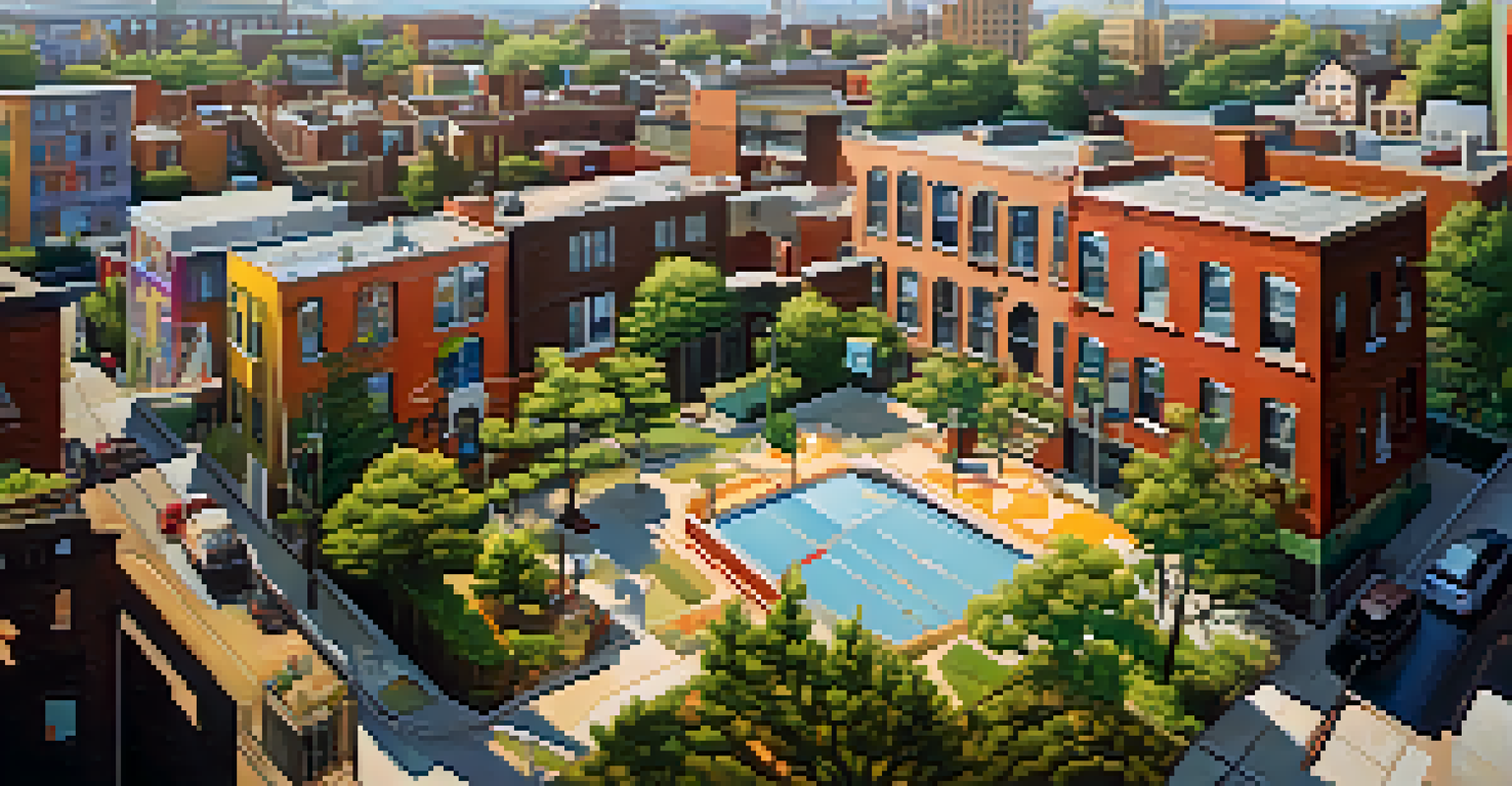The Influence of Graffiti on Urban Politics and Identity

Graffiti as a Form of Political Expression in Cities
Graffiti has long been used as a powerful tool for political expression. In urban areas, it often serves as a voice for marginalized communities, allowing them to share their perspectives and grievances. For example, during the Arab Spring, graffiti became a prominent medium for protest, displaying messages of hope and resistance.
Art is not what you see, but what you make others see.
This art form not only challenges the status quo but also sparks conversations about social justice and governance. By transforming public spaces into canvases, graffiti artists can critique political leaders and policies, drawing attention to societal issues that often go unnoticed. The visual impact of graffiti makes it hard to ignore, compelling the public to engage with the messages being conveyed.
Moreover, the ephemeral nature of graffiti adds to its potency; once a piece is created, it becomes part of the urban landscape, often provoking immediate reactions. This interplay between art and politics illustrates how graffiti can influence not just individual opinions, but also broader political movements.
Cultural Identity and Community Representation Through Graffiti
Graffiti often reflects the cultural identity of a community, showcasing local history, struggles, and values. Artists use their work to celebrate their heritage, which can foster a sense of belonging among residents. For instance, murals depicting significant local figures or events can become symbols of pride and unity for neighborhoods.

Additionally, graffiti can serve as a means of reclaiming public space, allowing communities to assert their identity in areas often dominated by commercial or governmental messages. By doing so, they can challenge the narrative imposed by outside forces and highlight their unique stories. This act of creation can empower residents and encourage civic engagement.
Graffiti as Political Expression
Graffiti serves as a powerful voice for marginalized communities, facilitating political critique and social justice dialogue.
Furthermore, graffiti can facilitate dialogue between different cultural groups within a city. Collaborative mural projects, for example, can bring together diverse artists, creating a shared narrative that reflects the complexity of urban life. This blending of perspectives enriches the community's identity and fosters understanding among its members.
The Role of Graffiti in Urban Revitalization Efforts
In many cities, graffiti has been embraced as a catalyst for urban revitalization. Local governments and organizations often commission street artists to create murals, transforming neglected areas into vibrant cultural hubs. This not only beautifies the space but also attracts visitors and boosts local economies.
The role of the artist is to make the revolution irresistible.
Such initiatives demonstrate how graffiti can be harnessed to promote tourism and community pride. By showcasing local talent, cities can create a unique identity that draws people in, encouraging exploration and interaction with the area. For example, cities like Berlin and Melbourne have become known for their thriving street art scenes, significantly contributing to their cultural appeal.
However, the challenge remains to balance artistic expression with community needs. While revitalization can bring positive change, it can also lead to gentrification, displacing long-time residents. Thus, it’s essential for city planners to engage with local communities to ensure that graffiti initiatives reflect their values and aspirations.
Controversies Surrounding Graffiti: Art vs. Vandalism
The debate over whether graffiti is art or vandalism is a longstanding one. On one hand, many view it as a legitimate form of artistic expression that enriches urban environments. On the other hand, critics argue that unauthorized graffiti defaces property and undermines public order.
This dichotomy often leads to conflict between artists and law enforcement, as cities grapple with how to regulate graffiti. In some cases, legal walls have been established, allowing artists to showcase their work without fear of prosecution. However, these initiatives can be seen as a way to contain creativity rather than embrace it, raising questions about artistic freedom.
Cultural Identity Through Art
Graffiti reflects and celebrates community identity, fostering a sense of belonging and reclaiming public spaces.
Ultimately, the perception of graffiti often depends on context and intent. When created with the community's consent or for social causes, it is more likely to be celebrated. Conversely, when seen as mere vandalism, it can lead to negative repercussions for the artists involved and the neighborhoods they inhabit.
Graffiti and the Evolution of Urban Aesthetics
Over the years, graffiti has played a significant role in shaping urban aesthetics. It has moved from being a rebellious act associated with youth culture to a recognized art form celebrated in galleries and exhibitions. This evolution reflects changing attitudes toward public art and its place in society.
Street art festivals and competitions have emerged, showcasing both established and emerging artists. These events validate graffiti as a legitimate artistic movement, promoting creativity while also challenging traditional notions of art spaces. As a result, cities are increasingly incorporating graffiti into their cultural narratives, recognizing its impact on urban aesthetics.
Moreover, this shift encourages a dialogue about the role of public art in urban planning. As cities become more inclusive of diverse artistic expressions, the landscape transforms, telling stories that resonate with a broader audience. This evolution invites residents to rethink how they perceive and interact with their urban environments.
The Globalization of Graffiti: A Worldwide Movement
Graffiti has transcended geographical boundaries, becoming a global phenomenon. Artists from various countries draw inspiration from each other's work, leading to a rich tapestry of styles and messages. This exchange has resulted in a diverse range of graffiti that reflects local cultures while also resonating on an international scale.
Social media plays a crucial role in this globalization, allowing artists to share their creations and connect with others across the world. Platforms like Instagram have become virtual galleries, where graffiti enthusiasts can discover new artists and styles, fostering a sense of community and collaboration. This interconnectedness amplifies the voices of graffiti artists, making their work accessible to a global audience.
Graffiti's Role in Urban Revitalization
Cities increasingly embrace graffiti to revitalize neighborhoods, attracting tourism while navigating the challenges of gentrification.
However, this globalization also raises questions about authenticity and cultural appropriation. As styles and techniques spread, it’s essential for artists to remain mindful of the cultural contexts from which they originate. By honoring these roots, graffiti can continue to serve as a powerful form of expression that bridges cultural divides.
The Future of Graffiti in Urban Landscapes
As cities continue to evolve, so too will the role of graffiti in shaping urban landscapes. The future may see an increase in collaborations between artists and local governments, leading to more sanctioned public art projects. This shift could help mitigate the tensions between graffiti as art and as vandalism, fostering a more inclusive environment for artistic expression.
Additionally, advancements in technology, such as augmented reality, may revolutionize how graffiti is experienced. Imagine walking through a neighborhood and using a smartphone to see hidden layers of a mural come to life through digital animations. This integration of technology and art could attract new audiences and provide fresh ways to engage with urban spaces.

Ultimately, the future of graffiti will depend on how cities prioritize community engagement and artistic freedom. By embracing graffiti as a legitimate part of urban culture, cities can create dynamic environments that reflect the diverse voices and identities of their residents.